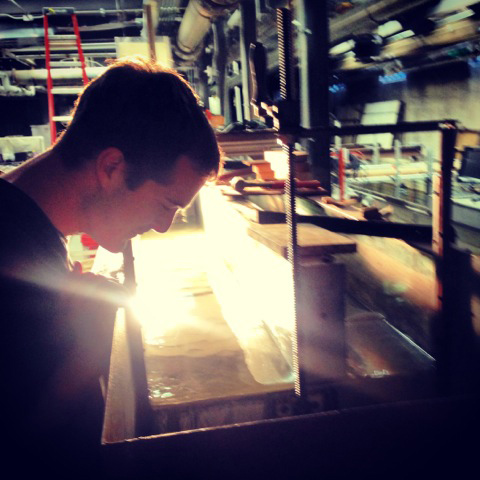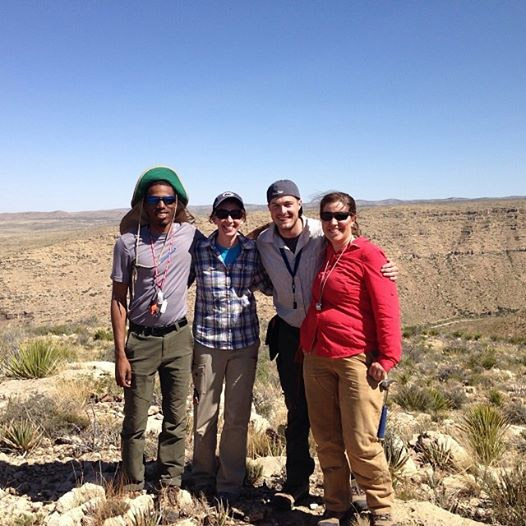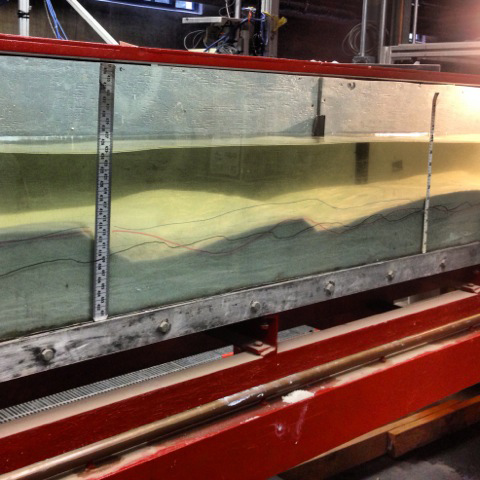58th Annual Report on Research 2013 Under Sponsorship of the ACS Petroleum Research Fund
Dr. Elizabeth Hajek
 Department of Geosciences
Department of Geosciences
Pennsylvania State University
Fine-Sediment Storage and Bypass in Sandy Fluvial Systems
Dr. Elizabeth Hajek studies river and floodplain (fluvial) sediments, with particular interest in predicting where good-quality hydrocarbon reservoirs can be found in buried fluvial deposits. An example of a good-quality hydrocarbon reservoir would have sand or coarse-grained rocks deposited in ancient river channels. In contrast, river beds with fine-grained rocks tend to be poor reservoirs, as clay or silt can be a barrier to fluid flow in those strata.
According to Dr. Hajek, the inspiration for her ACS PRF Doctoral New Investigator proposal was her examination of ancient river outcrops in field geology. "When you start looking at these ancient river bed deposits, you notice that some of them look a lot muddier than others, and you start to wonder why. Did those muddy sandstone deposits represent rivers that were themselves muddy?" That led her to think how to design experiments to test whether this hypothesis was even possible.
To address if the amount of clay that gets trapped in a sandy river bed is in any way related to how much clay that river carried, Dr. Hajek and her graduate student, Nate Wysocki, conducted a series of experiments at the St. Anthony Falls Laboratory of the University of Minnesota, in which different concentrations of clay minerals were supplied to a flume with constant flow discharge and sand supply.
The results of these experiments suggest that you get the most clay preserved in river beds when local aggradation rates in the riverbed are very high. According to Hajek, having greater amounts of clay trapped in the river bed when sediment transport rates are high, "is a little counter-intuitive, because we normally think of clay [deposition] being associated with slow flow velocities, but our experiments suggest that when sediment transport rates are very high, you're depositing things very quickly, so you can trap and preserve these clays into the bed material."
Dr. Hajek commented that "you can't always do field work in the summer" and the ACS PRF grant let her graduate student go do the work when there was available time at the St. Anthony Falls lab. "The PRF grant allowed Nate to get all the equipment that he needed for monitoring the experiment, and to travel when we needed to go conduct these experiments. This was really invaluable." Another unexpected outcome of this research was the involvement of undergraduate Geology students from a local college: "Seven Macalester College students in the Sedimentology and Stratigraphy class helped Nate with the manpower to pour 50-pound bags of clay into the flume every 10 or 15 minutes over the course of a 6-hour experimental run. We were able to pull in a class of students who normally wouldn't have a chance to 'get their hands dirty' in a flume experiment."
After earning her doctorate in Geology from the University of Wyoming, and a post-doctoral fellowship at the University of Minnesota, Hajek joined Penn State's College of Earth and Mineral Sciences in 2010. She was recently honored with the Slingerland Early Career Professorship for her early career achievements in teaching, research, and service. The ultimate goal of her research is to understand the sedimentary rocks record landscape processes , using a combination of field work, numerical modeling, and flume experiments. According to Hajek, "the better we understand the surface processes that form sedimentary rocks, the better we can predict and interpret what those rocks mean," and these flume experiments may lead to more sophisticated quantitative interpretations of how landscapes evolved at different times in Earth's past.
Grant #51950-DNI8: Read Hajek's Annual Report





Copyright © 2014 American Chemical Society











